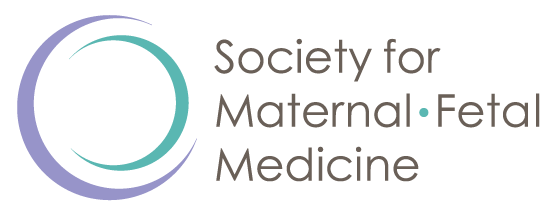
Sickle Cell Disease and Breastfeeding
By Colleen de Bellefonds
This article was originally published on BabyCenter.com
and was medically reviewed by SMFM experts.
Doctors usually approve and even recommend breastfeeding in people with sickle cell disease. Most sickle cell treatments are considered safe for breastfeeding women, although you'll want to talk to your doctor first. Some pain relievers, antibiotics and anticoagulants aren't recommended during breastfeeding, since higher levels are passed to babies via breastmilk. Breastfeeding can still be challenging if you have low milk supply or sickle cell disease symptoms such as pain. If you're unable to breastfeed, formula provides all the nutrition your baby needs. Cuddling and skin-to-skin contact can help you and your baby bond.
What is sickle cell disease?
Sickle cell disease (SCD) is a group of hereditary genetic disorders where a person's (normally round) red blood cells are hard, sticky, and crescent-shaped. Red blood cells are less efficient in carrying oxygen throughout the body and die early, which can lead to a low red blood cell count (anemia) and fatigue. People with sickle cell disease are also more susceptible to infections and experience periods of intense pain in the chest, abdomen, joints and bones.
While people with sickle cell disease can have healthy pregnancies with close monitoring from a healthcare team, they're at greater risk of complications including miscarriage, preterm birth, blood clots and high blood pressure. Children may inherit sickle cell disease from their parents if they receive two sickle cell genes, one from each parent.
The cure for sickle cell disease is a bone marrow or stem cell transplant. Otherwise, sickle cell disease treatments include blood transfusions, along with medications to manage pain and other symptoms as well as prevent complications.
Can I breastfeed if I have sickle cell disease?
It's likely you can breastfeed – and your healthcare team will even encourage you to do so – if you have sickle cell disease. Breastfeeding may even reduce your baby's risk of infections, which may be especially beneficial if your baby's been diagnosed with sickle cell disease. Keep in mind, sickle cell disease is a genetic condition: It isn't contagious, so you can't pass it on to your infant from close contact like a cold or other infection.
Always be sure to talk to your doctor and put your own health and wellbeing first. Most (but not all) medications that are used to treat sickle cell disease are safe to take if you're breastfeeding. It may also be challenging to breastfeed due to chronic pain or periods of acute pain.
Remember, your physical and mental health is important—especially now that you have a new baby who depends on you.
Can I take sickle cell medication when I'm breastfeeding?
Most sickle cell disease medications are safe to take while breastfeeding. However, some pass through breast milk and could be dangerous for a baby. If you want to breastfeed, talk to your healthcare provider ahead of time to find out if the medication you're taking is safe for your baby.
Your provider will help you weigh the risks and benefits of your sickle cell disease treatments and discuss your options with you. You can also check the LactMed online database if you have questions about how a specific drug might affect your breast milk or your baby.
Here are some common sickle cell disease treatments and how they can affect a baby:
Aspirin and other pain relievers
Aspirin is often recommended to relieve pain caused by sickle cell disease, but it usually isn't the medication of choice when you're breastfeeding.
Instead, providers often recommend nonsteroidal anti-inflammatory drugs (NSAIDs, such as ibuprofen) or acetaminophen to help relieve pain while breastfeeding.
Opioids
If you experience severe pain that doesn't respond to other pain relievers, your doctor may recommend opioid medications.
Some opioids, such as morphine, are generally considered safe to take in low doses under the supervision of your doctor while breastfeeding, although a very small amount of the drug will reach your baby through your breast milk. Other medications can reach your baby in unsafe amounts, including codeine, tramadol, hydrocodone, meperidine and oxycodone. Your provider will prescribe the medication that is safest for you while breastfeeding.
Only take the amount prescribed. And be sure to tell your child's doctor if you notice changes in your baby, such as drowsiness (newborns shouldn't sleep for more than four hours at a time and should feed every two to three hours), breathing problems or limpness.
Hydroxyurea
This drug, which is used to reduce the risk of sickle cell disease complications, is considered safe to take while breastfeeding.
Because small amounts can still pass through your breast milk to your baby, your healthcare provider will likely recommend that you try to avoid breastfeeding for three hours after taking hydroxyurea. That means you'll likely need to take the medication immediately after you've finished a breastfeeding session.
Iron chelators
Iron chelators (deferoxamine) are used to treat people with sickle cell disease who are undergoing blood transfusions to reduce excess iron levels. The drug is unlikely to affect the iron levels in a mom's breast milk, and it's poorly absorbed when consumed orally (as it would be by your baby via your breast milk)—so there's a good chance it your healthcare provider will approve breastfeeding if you need to take it.
That said, since little research has been published on deferoxamine, it's possible your baby's iron levels will be monitored to be extra cautious.
Anticoagulants
Sickle cell disease can increase the risk of blood clots that occur in a deep vein (a condition known as deep vein thrombosis, or DVT) or the lungs (pulmonary embolism, or PE). Because DVT and PE can result in serious illness and death, anticoagulant drugs are sometimes used as a preventative treatment in people who are considered at higher risk of these conditions.
Talk to your doctor about which anticoagulants are safest for you and your baby. Warfarin, rivaroxaban and dabigatran make it into breast milk in sufficiently low amounts that are very unlikely to affect your baby, so they're considered the medications of choice. However, your doctor will monitor your newborn for signs of bleeding, especially if your baby was born preterm.
Apixaban is usually not used, as levels found in breast milk are relatively high. And because edoxaban hasn't been well-studied in breastfeeding people, your doctor will likely recommend another option.
Will I have to stop breastfeeding if I have sickle cell disease? If so, what can I do instead?
As long as the medications you need to manage your condition are considered safe, you will likely get the green light from your doctor to breastfeed if you have sickle cell disease. However, you may find that breastfeeding is challenging (or simply not possible) due to milk supply issues or symptoms like pain.
Try not to be hard on yourself. Many women are unable to (or choose not to) breastfeed, and their babies are perfectly healthy. If breastfeeding isn't possible, feeding your baby formula provides all the nourishment babies need to grow and thrive. Cuddling your baby during formula-feeding is just as nurturing.
Try holding your baby skin-to-skin while you feed, making lots of eye contact, and talking softly. That helps develop a strong bond and attachment as your baby feeds. Holding your baby skin-to-skin also helps them to feel safe and calm, as they feel your warmth and are reassured by your familiar smell.
If your baby is preterm, low birth weight or hospitalized due to illness, you can ask your provider about using breast milk from a milk bank (like the ones that belong the Human Milk Banking Association of North America).
About the author: Colleen de Bellefonds is a freelance health and lifestyle journalist. She's raising her toddler daughter and newborn son with her French husband in Paris.
References
Centers for Disease Control and Prevention. (2020). Sickle Cell Disease and Pregnancy. https://www.cdc.gov/ncbddd/sicklecell/pregnancy.html [Accessed November 2021]
Mayo Clinic. (2021). Sickle Cell Anemia. https://www.mayoclinic.org/diseases-conditions/sickle-cell-anemia/symptoms-causes/syc-20355876 [Accessed November 2021]
Centers for Disease Control and Prevention. (2020). What Is Sickle Cell Disease? https://www.cdc.gov/ncbddd/sicklecell/facts.html [Accessed November 2021]
Henley SJ, et al. (1995). Anemia and insufficient milk in first-time mothers. https://pubmed.ncbi.nlm.nih.gov/7779228/ [Accessed November 2021]
National Health Service. (2019). Pregnancy and sickle cell disease. https://www.imperial.nhs.uk/~/media/website/patient-information-leaflets/haematology/red-blood-cell-disease/pregnancy-and-sickle-cell-disease.pdf [Accessed November 2021]
Centers for Disease Control and Prevention. (2020). Complications and Treatments of Sickle Cell Disease. https://www.cdc.gov/ncbddd/sicklecell/treatments.html [Accessed November 2021]
Nogueira ZD, et al. (2015). Breastfeeding and the anthropometric profile of children with sickle cell anemia receiving follow-up in a newborn screening reference service. https://www.ncbi.nlm.nih.gov/pmc/articles/PMC4516368/ [Accessed November 2021]
Mayo Clinic. (2020). Breast-feeding and medications: What's safe? https://www.mayoclinic.org/healthy-lifestyle/infant-and-toddler-health/in-depth/breastfeeding-and-medications/art-20043975 [Accessed November 2021]
Royal College of Obstetricians & Gynaecologists. (2018). RCOG review clarifies pain relief options for women during pregnancy and breastfeeding. https://www.rcog.org.uk/en/news/new-rcog-review-clarifies-pain-relief-options-for-women-during-pregnancy-and-breastfeeding/ [Accessed November 2021]
National Institutes of Health, Drugs and Lactation Database. (2021). Aspirin. https://www.ncbi.nlm.nih.gov/books/NBK501196/ [Accessed November 2021]
National Institutes of Health, Drugs and Lactation Database. (2020). Hydroxyurea. https://www.ncbi.nlm.nih.gov/books/NBK500984/ [Accessed November 2021]
National Institutes of Health, Drugs and Lactation Database. (2020). Deferoxamine. https://www.ncbi.nlm.nih.gov/books/NBK500811/ [Accessed November 2021]
Wattum JJ, et al. (2018). Antibiotics and lactation: An overview of relative infant doses and a systematic assessment of clinical studies. https://onlinelibrary.wiley.com/doi/full/10.1111/bcpt.13098 [Accessed November 2021]
Centers for Disease Control and Prevention. (2020). Diagnosis and Treatment of Venous Thromboembolism. https://www.cdc.gov/ncbddd/dvt/diagnosis-treatment.html [Accessed November 2021]
National Institutes of Health, Drugs and Lactation Database. (2021). Morphine. https://www.ncbi.nlm.nih.gov/books/NBK501237/ [Accessed November 2021]
National Institutes of Health, Drugs and Lactation Database. (2018). Edoxaban. https://www.ncbi.nlm.nih.gov/books/NBK500740/ [Accessed November 2021]
National Institutes of Health, Drugs and Lactation Database. (2021). Apixaban. https://www.ncbi.nlm.nih.gov/books/NBK500741/ [Accessed November r 2021]
National Institutes of Health, Drugs and Lactation Database. (2021). Rivaroxaban. https://www.ncbi.nlm.nih.gov/books/NBK500742/ [Accessed November 2021]
National Institutes of Health, Drugs and Lactation Database. (2021). Dabigatran. https://www.ncbi.nlm.nih.gov/books/NBK500744/ [Accessed November 2021]
National Institutes of Health, Drugs and Lactation Database. (2020). Warfarin. https://www.ncbi.nlm.nih.gov/books/NBK501137/ [Accessed November 2021]
Daei M, et al. (2021). Direct oral anticoagulant safety during breastfeeding: a narrative review. https://pubmed.ncbi.nlm.nih.gov/33963877/ [Accessed November 2021]
Centers for Disease Control and Prevention. (2020). What is Venous Thromboembolism? https://www.cdc.gov/ncbddd/dvt/facts.html [Accessed November 2021]
Food and Drug Administration. (2019). Use of Codeine and Tramadol Products in Breastfeeding Women - Questions and Answers. https://www.fda.gov/drugs/postmarket-drug-safety-information-patients-and-providers/use-codeine-and-tramadol-products-breastfeeding-women-questions-and-answers [Accessed November 2021]
March of Dimes. (2019). Keeping Breast Milk Safe and Healthy. https://www.marchofdimes.org/baby/keeping-breast-milk-safe-and-healthy.aspx [Accessed November 2021]
Unicef. (n.d.). Skin-to-Skin Contact. https://www.unicef.org.uk/babyfriendly/baby-friendly-resources/implementing-standards-resources/skin-to-skin-contact/ [Accessed November 2021]
Centers for Disease Control and Prevention. (2021). Feeding from a Bottle. https://www.cdc.gov/nutrition/infantandtoddlernutrition/bottle-feeding/index.html [Accessed November 2021]
UK Association for Milk Banking. (n.d.). Receiving Donor Milk. https://ukamb.org/receiving-donor-milk/ [Accessed November 2021]
KidsHealth from Nemours. (2018). Sickle Cell Disease. https://kidshealth.org/en/teens/sickle-cell-anemia.html [Accessed November 2021]
